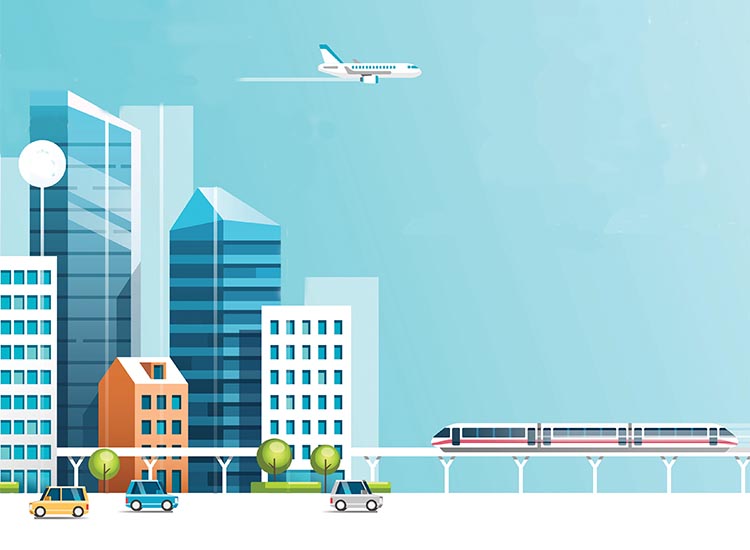It’s time we integrated key services to achieve the smart city reality
Smart cities are within touching distance, but only if deployed intelligently. How can the panacea of smart cities be achieved?
Since the start of the pandemic, this country has been in stasis. Unsure of what will happen next, many have been paralysed by indecision – both in terms of how to progress their business in one of the most turbulent economic periods in modern history, and how to keep their workforce safe yet active.
There’s no doubt our march towards a connected society has stumbled slightly. We’re more connected than ever thanks to home technology and mobiles; but in terms of services and IoT state provision, it’s taken a back seat. That’s not to say we won’t achieve the status one day – it will come, but in my view, certain key elements need addressing before we get there. So, what is required?
Many organisations promote a top-down approach to creating a smart city but in reality, we find the bottom-up approach is more successful. Starting with the specific challenges that city wishes to solve and only then bringing everything together into a cohesive unit by leveraging data in a sophisticated manner. Then, if something does go wrong or an incident occurs,
it is better able to combat these threats and recover more quickly. It creates a response that is more resilient than a siloed city with separate divisions between software which act independently instead of cohesively.
Smart cities are within touching distance, but only if deployed intelligently and with a full appraisal of the threats posed. Not only do we need to address silos in some areas, we actually need them in others – or at the very least need a serious conversation about looming threats to national security that must be dealt with before we open up our economic and physical prosperity to hostile state-sponsored hacking. Smart cities can bring prosperity, but with greater connectivity comes greater risks – here are our thoughts on how the panacea of smart cities can be achieved.
We need to talk about state-sponsored threats
Ongoing tensions between China and liberal democracies show no signs of going away, and could get a whole lot worse. We’ve seen the national security concerns around Huawei and its consequent removal, and since the US blacklisting of several Chinese companies, their spend seems to have flocked to the European market. It’s been flooded with sophisticated technology at rock bottom prices which others can’t match while remaining commercially viable. For those willing to sell below the true cost of their hardware it begs the question, what is the motive if it isn’t profit? And is public data part of the sale?
Cash-strapped public entities are having to make tough choices so it’s no surprise that low-cost, high-spec solutions prove attractive. Yet, further questions have to be asked, and satisfactorily answered, before significant values of public data are potentially exposed to companies with questionable ownership or motives. Now, imagine the risk if one of those departments were to be hacked, yet the connectivity of smart cities led to the back door of emergency services, financial services or to the heart of government? While we tend to think about smart cities being mainly around convenience and innovation, the associated new threats can’t be ignored.
Law enforcement
Today’s crime landscape is very different to what it was ten or twenty years ago – it now encompasses a wider scope, with criminals operating on an increasingly sophisticated scale. Plus, with the advent of armchair criminals, hacking their way to seize valuable data, forces now fight wars on a physical and virtual front.
Smart cities actually present an opportunity for law enforcement to create a fluid and co-operative ecosystem – no longer dictated by county or inter-city departmental boundaries. By enabling the open sharing of data across jurisdictions, both public and private, it is possible to better serve the needs of the community as a whole. For example, in Detroit a 50% reduction in crime was achieved through a collaboration that allowed private petrol stations to share real-time surveillance footage with law enforcement. It has the benefit of enabling more police to be where they’re needed, instead of pulled in all directions attending crime scenes which could, in theory, have been prevented thanks to enhanced data sharing.
Traffic
Movement is a key piece in the smart city jigsaw, and you only have to look at how people travel has changed over the past five years, with mobility as a service (MaaS) taking off and moving us towards a more digital approach. With the ever-increasing number of vehicles on the road, it’s important for those trying to enforce the rules – transport authorities and law enforcement in the most serious cases – to work together to spot incidents worthy of response. Automatic number plate recognition (ANPR) and safety cameras feeding into VMS systems will be key to this, helping to flag alerts in real-time.
For smart cities to become a reality, we need to ask ourselves some hard questions and then find ways to implement the requirements safely and sophisticatedly. We need to change our attitudes and behaviours to form a new, more informed ecosystem.
The technology is out there and ready to use, it’s just about bringing it all together, and adapting it to local needs. We should be moving to a system where computers do the heavy lifting, with humans there to make decisions, to help drive an efficient outcome.
Paul Dodds
Country Manager, UK&I
Genetec
See other articles on this topic in our Security Technology category including Smart City Security and The Smart City and Physical Security
You can see previous articles Genetec in our Genetec Company Directory


